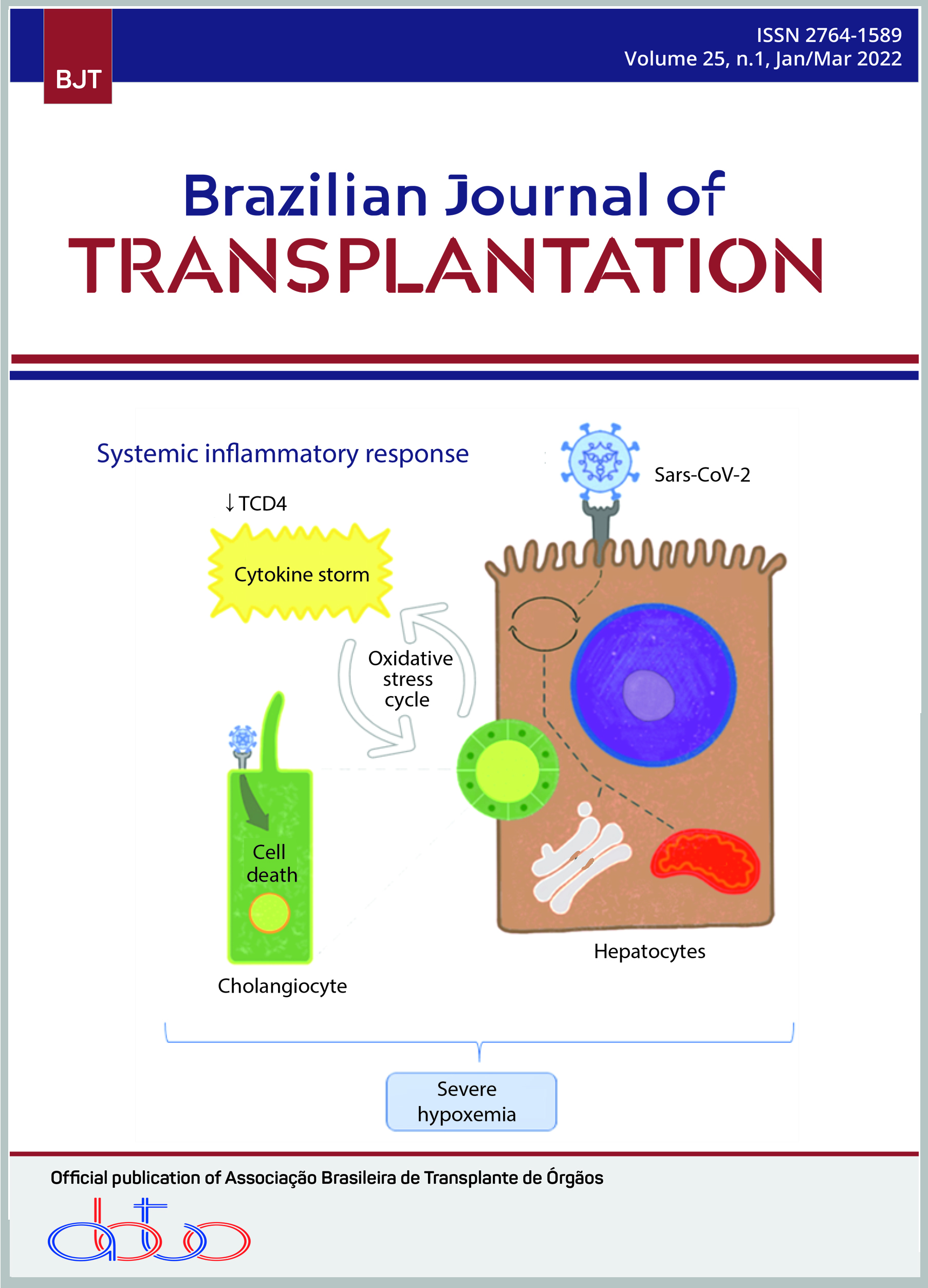Analysis of the Incidence of Cardiovascular Events in Post-Renal Transplant Patients Treated at a Specialized Service in Blumenau (SC)
Keywords:
Kidney Transplantation, Cardiovascular Diseases, Risk FactorsAbstract
Introduction: The main causes of death in kidney transplant recipients are infectious and cardiovascular diseases, both very common in Brazilian reality. In addition to conventional risk factors, specific risk factors may influence the development of cardiovascular disease in these patients. Objectives:To determine the incidence of cardiovascular events in post-kidney transplant patients, to analyze the cardiovascular risk factors in the first,third and fifth year post-transplant, and to characterize the profile of transplanted people in this study. Methods: Retrospective observational cohort study carried out in patients over 18 years of age who underwent kidney transplantation, from 2010 to 2016, followed up by the Associação Renal Vida, in Blumenau, Santa Catarina state,in Brazil. Results: The sample totaled 577 patients (392 males and 185 females); mean age group of 46.5 years; and 157 deaths, 43 of which were caused by cardiovascular diseases. It was observed that weight, body mass index and high-density lipoprotein (HDL) increased in the first year post-transplantation and stabilized after 36 months. Cholesterol increased in the first year, remained unchanged in the third and decreased in the fifth year. In addition, there was an increase in 64 patients with diabetes mellitus three years after transplantation, which is a risk factor for stroke, congestive heart failure (CHF), peripheral vascular disease and left ventricular hypertrophy in the third year after transplantation. Obesity was found to be a risk factor for acute myocardial infarction (AMI), since 60% of patients who had AMI had a body mass index > 30 kg/m2. In contrast, HDL levels greater than 40 seem to be a protective factor for left ventricular hypertrophy in the third year and for stroke in the fifth year. Age younger than 50 years also seems to be a protective factor for AMI, stroke, CHF and left ventricular hypertrophy in the first 36 months and for CHF after 60 months, as 66.67% of patients with CHF in this period were older than 50 years old. Conclusion: It was observed that part of the risk factors for cardiovascular diseases is modifiable. Thus, maintaining healthy habits, especially over 50 years of age, seems to be a strategy that can improve cardiovascular risk and life expectancy after kidney transplantation.
Downloads
Published
How to Cite
Issue
Section
License
Copyright (c) 2022 Ana Caroline Carassa Tondo, Julia Concer da Silva, Samantha Nagasako Soejima

This work is licensed under a Creative Commons Attribution 4.0 International License.









